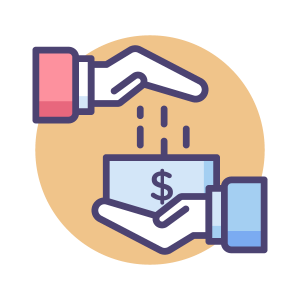If you’re like most nonprofit professionals, you’re always looking for new and innovative ways to engage your supporters. One great way to do that is by utilizing email marketing. But simply sending out emails isn’t enough – you need to make sure those emails are actually getting read. Email marketing is critical to most nonprofit organizations’ strategies to acquire new supporters, engage current ones, and gain traction on priority initiatives. In addition, as a nonprofit organization, marketing campaigns often rely heavily on nonprofit email subscribers list building because nearly all email users check their inboxes daily. In other words, email is one of the best ways to communicate with your fans.
There are a few critical components to creating successful email marketing campaigns for nonprofits. First, segmenting your email list is essential to developing targeted messaging and increasing the likelihood of recipients engaging with your emails. This can be done by dividing your audience based on past actions, demographics, or interests.
Next, compelling subject lines and content is crucial to getting supporters to open and read the email. Personalization can also improve open rates by including the recipient’s name in the subject line or using “you” language in the body of the email.
In addition to utilizing an attractive design and layout, including a clear call-to-action in each email is essential for driving action from supporters and in order to maximize the impact of your email marketing, it’s important to continuously gather email addresses from potential supporters. Whether it be donating, signing a petition, attending fundraising events or even incorporating a call-to-action for email sign-ups in traditional direct mail campaigns, providing a specific and easy way for recipients to take action will increase the effectiveness of your email marketing efforts.
Email marketing can be highly successful in nonprofit organizations’ outreach strategies. By segmenting their audience, creating engaging content, and including a clear call-to-action, nonprofits can effectively reach and mobilize their supporters through email marketing campaigns.
To ensure your nonprofit email campaigns are as successful as possible, use the following engagement tips:
- Personalize your emails’ subject lines and relevant content to make them more engaging for the reader. This can be done by addressing the recipient by their first name in the subject line or using “you” language in the body of the email.
- Segment your audience – divide them based on past actions, demographics, or interests – so that you can send targeted messaging and increase the likelihood of recipients engaging with your emails.
- Include a clear call-to-action in each email, such as donating, signing a petition, or attending an event, to drive action from supporters.
- Utilize A/B testing to figure out which strategies work best for your organization and audience for gaining more subscribers.
- Connect with supporters on multiple platforms, including email, to personalize messages and ensure they are still relevant to the reader.
Utilizing email is a great way to personalize messages and ensure they are still relevant for your reader. Here is our first tip to make your email campaigns more effective.
1) Increase customer engagement by personalizing and segmenting email messages
Social media posts are one-size-fits-all, but email marketing allows you to send personalized messages to each of your supporters. You can address them by name and ensure they only receive the most relevant messages.
A proper nonprofit email marketing strategy always starts with a clear definition of your target audience. Keep in mind that people respond more positively to messages that feel personalized, as opposed to general or one-size-fits-all content. Research suggests that upwards of 72% of consumers only engage with material that has been customized for them.
There are many benefits to personalizing your email marketing campaign, one of which is that it dramatically increases the chances that your emails will be read. Use the data you have collected about your supporters to create messages that feel like they were written just for them. Consider utilizing some of these personalization strategies:
- Segment your supporters into categories according to crucial information, such as how much they donate, whether it’s their first time contributing, or if they’re volunteers. Doing this can send targeted messages that are more relevant to each group.
- Using personalization in high traffic pages, such as donation thank-you letters or email campaigns, can greatly improve engagement and conversion rates. By automatically filling in relevant information for each supporter, such as their name or previous donation history, you create a personalized experience that shows your appreciation for their support. However, it’s important to thoroughly test your automation beforehand to ensure everything runs smoothly. Personalization may take some extra time and effort, but the improved response from your supporters will make it worth it.
Email personalization is only possible when you have the data to support it. So save the information your supporters submit through donation page, signup form or opt in form, event registrations, and surveys so you can easily reference them in future messaging. In order to make this happen, always keep things like supporters’ names, contact info., preferences, motivations, etc.
2) Use A/B testing to compare different strategies and see which one works better for you.
Trying to determine which strategies will be the most successful in engaging your target audience can be challenging. By conducting A/B tests, you can try different methods to see which performs the best so that you have concrete evidence of what does and does not work. Nonprofits can use A/B testing to determine which elements of their email marketing messages are most effective. Some things you might want to test include:
- The way your messages are organized, including the spacing and grouping of text and images.
- When writing your content, be sure to include specific details and phrasing that will engage your readers.
- Try a different design or phrasing for your call to action. You might be surprised at how much of a difference it makes!
- The email subject lines you’re using could improve.
When you’re ready to start testing, identify your key performance indicators (KPIs). Doing this will assist you in measuring success as you try out various elements. Then, to get a clear understanding of how each element affects specific KPIs, test one item at a time.
For example, you might test different variations of subject lines to see how they impact your open rate. Or, try testing a couple of different calls to action to discover which generates more clicks.
3) Be sure to create several different types of outreach messages. This will ensure that you have a message for every type of potential customer.
An organization’s common mistake when planning its email campaigns is constantly sending the same type of message. This can become repetitive and boring for your supporters, so it’s important to mix things up, so they look forward to hearing from you on a regular basis.
You can keep your supporters engaged by sending a variety of different types of emails. Remember to segment and personalize your messages so that they are targeted to the individual supporter. Here are some message types to consider:
- Welcome emails for the newest supporters.
- Donation solicitations.
- Messages of gratitude to the longest contributors.
- Newsletters with updates on what’s happening within the company.
- Impact stories detail the fantastic work that your nonprofit has done.
- Share exciting news, upcoming events, and ways you can help–all in one place.
Having different types of content prevents supporters from getting bored and demonstrates the many ways they can get involved with your organization.
4) Utilizing and collecting email addresses to contact supporters on multiple platforms
While email is a powerful marketing tool, combining it with other strategies can help create an even more successful campaign. For example, if someone sees your email outreach and then receives an ad for your cause, they’ll be exposed to your brand name multiple times and have more opportunities to get involved.
With email mapping, you can target your advertisements to people who have already given their email addresses to your organization. This way, you’re using information from supporters’ cookies to show ads as they browse other websites. These ads will appear on the margins of articles and websites and remind supporters about your nonprofit’s initiatives.
Keep the following tips in mind as you launch these campaigns:
- In order to keep your supporters engaged, remind them of what they read in your previous email. Make sure your message is short so that it can be easily understood.
- Make sure that your calls to action are complementary. Promoting the same campaign or opportunity for engagement will make you more likely to get results.
- Make your design attention-grabbing to stop people in their scroll. GIFs and moving graphics are especially effective at catching people’s eyes.
Keep tabs on the progress to grow your nonprofit email campaigns and any ads you’re running. Chances are good that you’ll find they work best when used together to engage backers.
Whether you’re a startup organization or a leading corporation, CommunityForce provides fully customizable, all-in-one online grant management solutions to maximize your efficiency, simplify complex processes, and improve collaboration so you can focus on increasing your impact. We’ve helped organizations streamline their entire process no matter the size and scope of their giving.


















